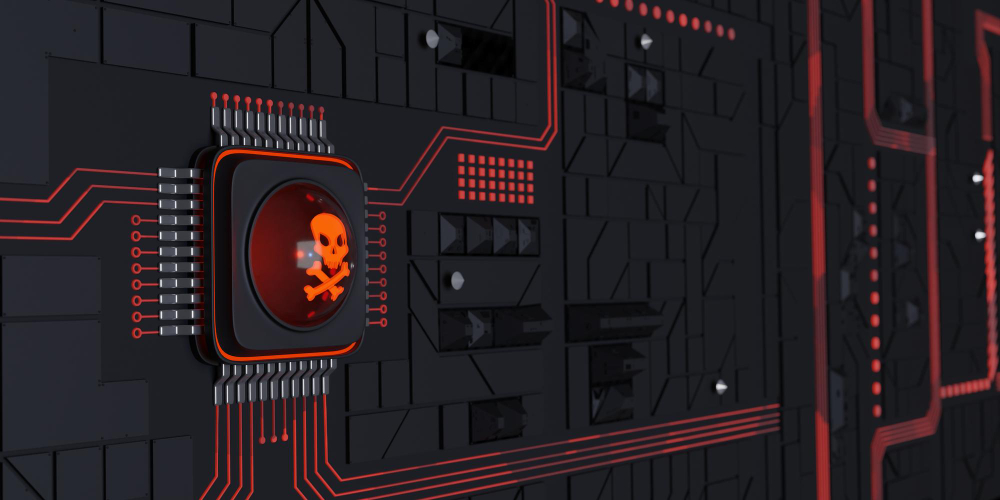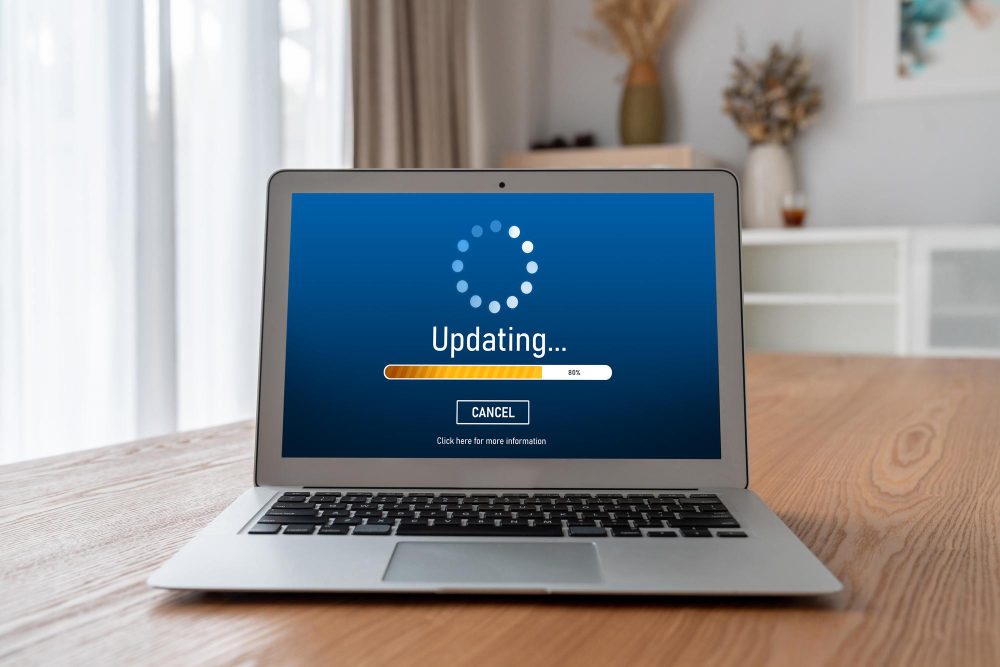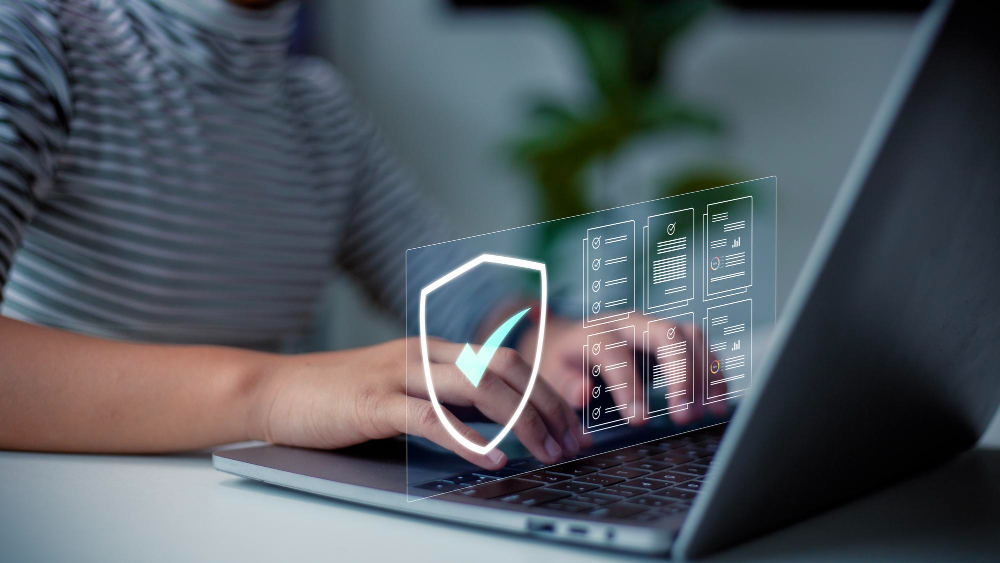Scareware is a prevalent threat that employs scaremongering tactics to deceive users. These malicious programs are designed to frighten users into believing their devices have been infected with malware.
By exploiting fear, the attackers aim to trick users into purchasing unnecessary software or revealing personal information.
Understanding how scareware operates is crucial for staying safe online and avoiding these deceptive tricks. Let’s explore scareware and learn how to protect your device from these malicious attacks!
What is Scareware?

Living up to its name, scareware is a social engineering tactic designed to scare users into downloading malware-infected software or paying for fake software and exposing personal information.
Typically, this attack alerts users of a ‘virus’ detection and offers a solution by prompting them to download or purchase a fake application to remove the virus.
Based on its technique, this attack uses a combination of spoofing and social engineering, like phishing.
How Does Scareware Work?

Commonly, scareware is spread through phishing emails or pop-up ads that lead users to visit a malware-infested website.
The emails or pop-up ads are specifically designed to appear legitimate, often incorporating company logos like Google or Windows.
For example, ‘Windows Defender’ might send you an email with ‘A virus has been detected. Take action now!’ or a pop-up ad with a similar tone.
The scaremongering agenda is followed by a solution to ‘remove the virus’, instructing you to click the link to their fake-solution website. Once you comply, you will be redirected to their scam website and asked to insert your credit card information to purchase their fake application.
Sometimes, the software doesn’t even exist. Other times, it does, but it only serves to slow down your device without doing anything useful. In the worst cases, the software is the malware itself.
Scareware vs Ransomware

Scareware and ransomware are both malicious software, but they operate differently and have distinct goals.
Scareware uses fear to trick users into downloading fake software.
For example, you might see a pop-up ad claiming your device is infected with viruses. The ad urges you to download certain scareware programs to fix the issue. However, this program is either useless or harmful, slowing down your device or stealing your information.
Ransomware, on the other hand, is more aggressive. It locks your files or entire system and demands a ransom to unlock them.
For instance, you might receive an email with an attachment that, once opened, encrypts your files. The attacker then demands payment to restore access.
Unlike scareware, ransomware directly holds your data hostage.
Examples of Scareware

Here are some form examples of scareware attacks:
Fake Tech Support
Scammers often start with a pop-up message claiming your computer is infected. The message urges you to call a “tech support” number from real companies like Microsoft.
When you call, the scammer pretends to be a technician and convinces you to grant remote access to your computer. While pretending to fix the issue, they may install malicious software or steal personal information.
Law Enforcement Scams
Scareware mimics official warnings from police or government agencies. You might see a message claiming illegal activity has been detected on your device, and you have to pay a fine to avoid prosecution.
Fake Virus Scams
This classic scareware scam trick involves scareware pop-up ads or alerts claiming your device is infected with a virus, urging you to download a specific antivirus program to remove the threat.
However, the recommended program is either useless or harmful. It may slow down your device, steal personal information, or demand payment for fake services.
Malvertising
It involves embedding malicious code in online advertisements. When you click on the ad, it redirects you to a fake website that claims your device is infected. The site then prompts you to download a program to fix the issue.
Scareware Removal Tips

It is important to take immediate action to remove scareware if you suspect that they have infected your device. Here are some effective tips for removing scareware:
- Disconnect from the Internet: Quickly disconnect your device to prevent the scareware from communicating with attackers.
- Restart in Safe Mode: Reboot your device in safe mode to stop the scareware from loading.
- Run a Full System Scan: Use legitimate antivirus software to perform a complete system scan and remove the scareware.
- Uninstall Suspicious Programs: Go to your device’s control panel, locate the scareware, and uninstall it.
- Update Your Software: Make sure your operating system (OS) and all software are up-to-date to protect against vulnerabilities.
- Use Trusted Security Software: Install and regularly update trusted antivirus and anti-malware programs to prevent future infections.
These efforts will effectively help remove scareware and protect your device from future attacks.
How to Protect Yourself from Scareware?

Here are some effective tips to protect yourself from scareware:
- Avoid Suspicious Pop-Ups: Never click on unusual or alarming pop-ups. Close them immediately or restart your browser.
- Download from Trusted Sources: Only download software from reputable websites. Avoid clicking on ads or links from sketchy sources.
- Keep Software Updated: Routinely update your OS, browser, and all installed software to patch vulnerabilities.
- Use Antivirus Software: Install and maintain reputable antivirus software with pop-up blocking features.
- Enable Pop-Up Blockers: Use built-in browser pop-up blockers to prevent scareware ads from appearing.
- Be Skeptical of Urgent Messages: Scareware relies on creating a false sense of urgency. Verify any alarming messages before taking action.
Frequently Asked Questions
How do I get rid of Scareware?
Disconnect from the internet, restart in safe mode, and run a full system scan with reputable antivirus software. Uninstall any suspicious programs and keep your software updated to prevent future infections.
How do I know if I have a fake virus?
Fake virus alerts often use alarming pop-ups, urgent messages, and requests for payment. Look for poor grammar and verify alerts with your installed antivirus software or a quick web search.
How are Scareware and Pretexting Different?
Scareware uses fear to trick users into downloading fake software. Pretexting involves creating a false scenario to gain trust and extract sensitive information. Scareware relies on fear, while pretexting builds false trust.
Conclusion
Scareware exploits fear to launch its attacks. From fake tech to malvertising, there are various ways this malware can approach you. To protect your data, understand and apply the information in this guide to avoid such threats.
If you need further help keeping your data safe from scareware and other malware, contact Fluxgate and our cyber security expert now!
